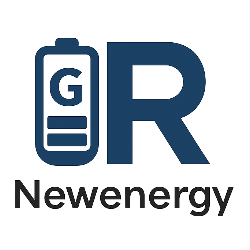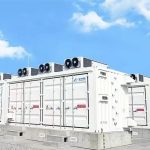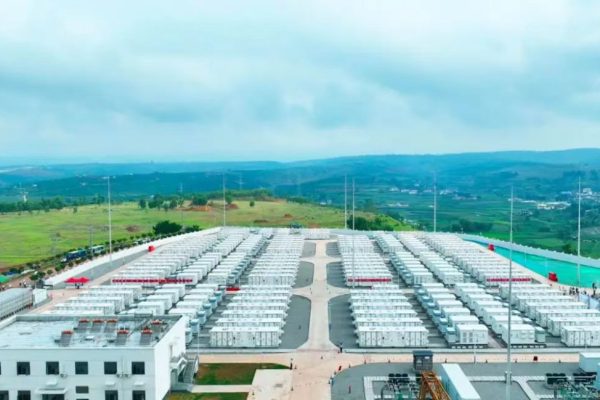Introduction
With the rise of renewable energy and the global shift toward decarbonization, Battery Energy Storage Systems (BESS) have become indispensable in modern power grids. However, the increasing deployment of BESS units has also raised significant safety concerns, particularly regarding fire hazards. High-profile incidents and growing regulatory scrutiny have pushed manufacturers to prioritize fire testing and performance evaluation. This article delves into recent developments in BESS fire safety, focusing on fire testing procedures, safety performance, system advantages and drawbacks, technical solutions, and the evolving regulatory landscape.
Recent Benchmark: Hithium’s Open-Door Fire Test
In a notable industry milestone, Chinese battery manufacturer Hithium conducted a large-scale open-door fire test on its 5 MWh containerized BESS module, known as the ∞Block. This test, adhering to the UL 9540A and NFPA 855 standards, was performed with the system at 100% State of Charge (SOC), using minimal spacing (15 cm) between units to simulate real-world density.
The test lasted over 15 hours and subjected the storage unit to extreme thermal stress. Temperatures inside the test unit exceeded 1,370°C, yet the fire did not propagate to adjacent units. The structural integrity of the container remained intact, and there was no observed external fire or gas emission. These results demonstrate the efficacy of comprehensive, multi-level safety design in preventing thermal runaway propagation.
Understanding BESS Fire Testing Standards
Two of the most critical standards for BESS fire testing are UL 9540A and NFPA 855:
- UL 9540A evaluates the potential for thermal runaway and fire propagation by performing cell, module, and full system-level tests.
- NFPA 855 outlines fire code requirements for energy storage system installation, spacing, ventilation, and fire suppression.
Hithium’s open-door approach goes beyond standard lab conditions by recreating a worst-case scenario where fire suppression fails and ambient ventilation is unrestricted. This type of real-world testing is rare but essential for proving system resilience.
Performance Insights from the Test
The Hithium test revealed key performance indicators:
- No Fire Spread: The passive fire mitigation strategies effectively prevented fire spread to neighboring containers.
- Structural Integrity Maintained: Even under peak thermal loads, the structural enclosure held firm, suggesting robust mechanical and thermal engineering.
- Extended Burn Duration: A 15-hour fire test reflects the unit’s ability to endure prolonged exposure without catastrophic failure.
System Advantages
Hithium’s system showcases several advantages in safety architecture:
- Multi-tier Design: Safety mechanisms exist at the cell, module, rack, and container levels.
- Thermal Isolation: Use of high-performance insulating materials and fireproof walls limits heat transfer.
- Gas Management: Dedicated venting paths help prevent overpressure and direct toxic gases away.
- Passive Safety First: Systems are designed to contain or extinguish fires without relying solely on active suppression systems.
These features reflect a trend toward intrinsic safety, where failure modes are anticipated and managed through design rather than post-event response.
Challenges and Limitations
Despite the successes, several challenges remain:
- Cost of Full-Scale Testing: Open-door, high-capacity fire tests are expensive and logistically complex, limiting widespread adoption.
- Standardization Gaps: Manufacturers interpret and apply UL and NFPA standards differently, resulting in inconsistent safety benchmarks.
- Environmental Risks: Firewater runoff can carry hazardous substances like cobalt, nickel, lithium, and organic compounds, posing contamination risks.
- Limited Real-World Data: Laboratory and controlled field tests may not fully capture long-term degradation, operational stress, or installation errors.
Technical Solutions for Enhanced Safety
To address these risks, a range of technical measures are being adopted:
- Materials Innovation
- Flame-retardant separators and electrolytes.
- Enhanced casing materials for higher thermal resistance.
- Early Detection Systems
- Off-gas sensors, thermal cameras, and pressure monitors.
- Integration of machine learning for predictive fault detection.
- Passive and Active Fire Mitigation
- Phase-change materials for heat absorption.
- Automatic suppression systems using clean agents or water mist.
- Containment Infrastructure
- Installation of impermeable basins or dikes to collect firewater.
- Onsite filtration systems to treat contaminated runoff.
Future Development and Regulatory Trends
The path forward includes several key trends:
- Toward Real-World Validation: More manufacturers are expected to follow Hithium’s lead in conducting full-capacity, open-door fire tests.
- Global Standards Harmonization: Efforts are underway to align UL, NFPA, IEC, and ISO standards to create unified global safety benchmarks.
- Environmentally-Conscious Design: New systems will likely include firewater containment as a standard feature, addressing environmental regulations.
- Safer Chemistries: The industry is moving toward lithium iron phosphate (LFP), sodium-ion, and solid-state chemistries with lower flammability.
- Digital Integration: Cloud-based monitoring and AI-driven diagnostics will enhance real-time safety management.
Conclusion
The recent open-door fire testing of Hithium’s ∞Block BESS unit sets a new standard in energy storage safety. By demonstrating resistance to fire propagation and maintaining structural integrity under extreme conditions, Hithium provides a blueprint for the future of safe and reliable energy storage.
As the world increasingly relies on BESS to stabilize renewable energy and electrify infrastructure, fire safety will remain a cornerstone of public trust and regulatory compliance. Through advanced design, rigorous testing, and holistic risk management, the industry can meet these challenges head-on and ensure the safe deployment of energy storage systems at scale.









